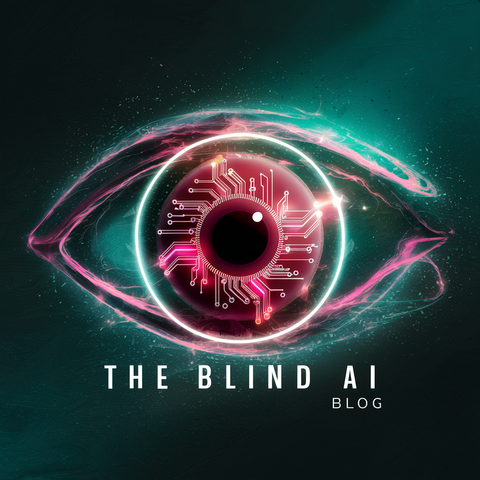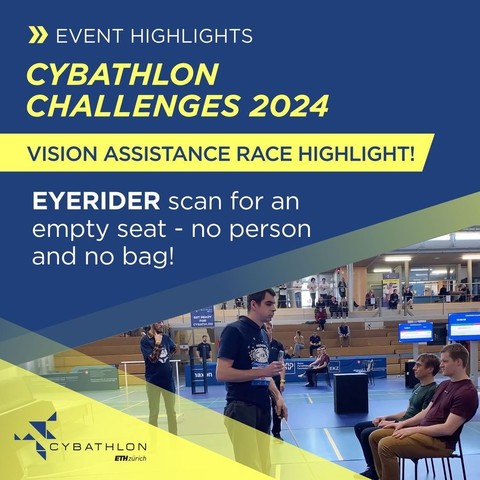Issue 102 of iScot Magazine is out now in digital format, with paper copies to follow soon. Some belters in this one. Do yourself a favour & subscribe.
My own contribution covers which apps people should download if they are just beginning their sight loss journey.
#Scotland #Magazine #SightLoss #Technology
#SightLoss
It feels like the Equality Act is slipping away.
The whole concept of “reasonable adjustments” was window dressing. Banking is pure capitalism.
It’s bad enough that, for example, new and old housing doesn’t meet the needs of disabled people, but that a bank can say they have a branch that has trained staff in X town, 25 miles away, is taking the mickey.
PS I won’t touch Barclay’s with a barge pole.
My town is losing Lloyd’s and NatWest banks. The remainder is: Barclay’s; Santander; and Halifax. I need to make sure there is counter service for opening a new account. So far Halifax says no. It’s likely it’s the same with Santander.
You may ask why I need counter service. I don’t at the moment. But I may need it in the future. Why? Because at any point I might lose my useful vision. I, like millions of people over 18, live with sight loss. That takes this from being about me to any one of us in the UK.
Accessibility is about practicality - paying bills, setting up direct debits, managing income and expenditure - and about agency.
Imagine then an online banking system that is not designed for screen readers. Imagine where another person monitors/reads out forms etc. Imagine that person is a manipulative partner.
Counter service offers safe banking. Also, a trained member of staff can pick up on partner abuse etc.
Sight loss is a deeply personal journey, and perspectives on it can vary widely. Watch the full discussion: https://www.youtube.com/watch?v=_ag_fGG7E3M
#LowVision #Perspectives #SightLoss
I found my own post thru THE JOYS OF CLEAR ALT TEXT COMPOSITION!
JOY UNTO ALL WHO CARVE MEANING INTO MULTIMEDIA,
MAKING WAY FOR THOSE WHO MAKE WAVES!
https://lgbtqia.space/@MxVerda/113187340313708910
Like a Dragon
Majima Goro is hot —
now in Hawai’i!
#YakuzaLikeaDragon #likeAdragon #yakuzaHawaii #MajimaGoro #GoroMajima #pirate #arr #meHearties #Japanese #WestCountry #soIguess #Okinawa #accent #antiPiracy #piracy #disability #eyepatch #vision #VisionLoss #visionImpaired #visionImpairment #sightLoss #eyesight #depthPerception #fighter #fighting #omg #watchThis #FightingGamesFriday #fightingGame #fighting_games #JRPG #RPG #nerd #puns #geek #dork #dweeb #game #gamer #gaming
From Pixels to Braille: CIRA is helping to create a safer and inclusive internet for youth with sight loss #Accessibility #CNIB #sightloss #blind
https://www.cira.ca/en/resources/news/net-good/from-pixels-to-braille-cira-is-helping-to-create-a-safer-and-inclusive-internet-for-youth-with-sight-loss/
Mind the gap: the Blind AI takes a look at productivity
For as long as I’ve been blind, there’s been this invisible but undeniable barrier to success —one that most people don’t think about but is a daily reality for blind people: the blindness productivity gap. It’s not that we can’t do things; it’s that everything seems to take just that little bit longer, requires a bit more effort, and sometimes an extra workaround or two. Whether it’s accessing documents, navigating the web, or understanding concepts that sighted people take for granted, blind people are often a few steps behind—not because we lack ability, but because the tools aren’t always made with us in mind. This gap is the difference between how quickly or efficiently a sighted person can do something and how long it takes us. And while Braille and screen readers have come a long way, they still leave a lot of ground uncovered. But with AI, there’s a glimmer of hope that this gap could be reduced—or one day, dare I say it, closed entirely.
I’ve seen AI as an Assistive Technology from the start, that’s one of the reasons I have been both so open and enthusiastic about it and so fears in my defence of anyone using it. For forty years I have seen technology as a way of ameliorating a life being lived with sight loss. But I saw a greater potential in AI, I saw a chance to reduce or even, eventually, eliminate the blindness productivity gap.
So, for the past eighteen months, while the blindness community has gone wild with AI-generated image descriptions and Computer Vision as a whole, I have done that too, but I have also been using AI, a lot.
In this post I am hoping to make contact with those Secret Cyborgs amongst us and share some fruits of my labour. So, in the spirit of giving to receive, I’ll give three uses of AI that I have found make me a bit quicker or a bit better at doing something – sorry I can’t be clearer than that, but I think this is an art not a science.
1. Tooting (posting on Mastodon) like a pro: OK, I’m not sure if it is a pro thing, but I like to put emojis in posts to brighten them up. On iPhone we have the auto-emoji thingy (official Apple designation) but it’s harder on the web. I write my Toots in ChatGPT, plain text and prompt it to add emojis and hashtags. It usually does a great job and it makes my social media a bit more exciting.
2. I was studying advanced mathematics last year. The learning materials were accessible, but they had been written for a sighted audience. I found some of the concepts hard to wrap my head around, I started getting ChatGPT to ‘explain X to a blind person’ it helped me understand the more difficult concepts that could easily be seen in a diagram.
3. PDF documents. My universities alternative to a printed book is a PDF. In the past they have sort of kind of been OK, but I have had some occasions where I had to end up using that JAWS scanning thing that I have never used before or since! With ChatGPT I find PDF is almost my favourite format – I can upload a book or chapter and ‘talk’ to it, ask questions, request summaries, overviews and ‘top seven’ lists Etc. With Google’s NotebookLM I can even have a chapter of my textbook turned into a podcast. All of these helped me learn faster and with less effort spent on additional tasks to make possible what most other students can do effortlessly.
While these examples might not seem groundbreaking, they’ve made a big difference in my daily life, but as I said it is more art than science. I suspect I do far more than I realise, but in this post I am focussing on those things I do to fight blindness, not promoting AI, there is more than enough of that around at the moment.
So, what do you do with AI to overcome the blindness productivity gap? We all know the only option we’ve had up to now is ‘get really good at Braille’ – I started too late and too early for that. Too late because I was blinded as an adult, even if only just and too early because when I did learn to read braille, all I had to read was bank statements and smelly old braille books from previous decades! Back then, in the 18th century, an 80-cell braille display cost a year’s pay! Let me know in the comments your Top Tip for closing the Blindness Productivity Gap using AI.
As AI continues to evolve, I’m hopeful that these small improvements will add up to something bigger, allowing us to close the productivity gap for good. Let’s keep exploring and pushing the boundaries of what’s possible.
Lottie
#Accessibility #AI #AIsoftheBlind #Blind #computerVision #Disability #Education #Employment #FightingBlindness #Google #JAWS #NotebookLM #Productivity #Sightloss
Good couple of days doing #RNIB training on #counselling for #SightLoss
Are you unsure how to help people with vision loss? Check out this article on how best to help.
#SightLoss
https://www.bbeb.com/post/102j8k3/rnib-launch-be-helpful-guide
#blind and still looking your best!
#fashion #esthetics #sightloss
UPDATE, POSTPONED: Orkney Destination for Race Across the Libraries to Highlight Accessible Reading Options https://theorkneynews.scot/2024/03/15/update-postponed-orkney-destination-for-race-across-the-libraries-to-highlight-accessible-reading-options/ #Libraries, #OrkneyLibraryAndArchive, #Reading, #RNIB, #SightLoss, #SimonSavidge, #TrishSail
Blindness from some inherited eye diseases may be caused by gut bacteria – study https://www.independent.co.uk/news/science/blindness-cell-china-b2502692.htmlan interesting discovery, although the problem does seem to relate a rather small number of specific eye conditions. Still, the more science discovers, the sooner we may see sight loss prevented for some people. #Science is amazing.
#Blindness #SightLoss
EyeRider’s pilot uses his assistive app to look for an empty seat. Was this your favourite task in the Vision Assistance race?
#VisionLoss #VisionImpairment #VisionAid #SightLoss #WhiteCane #CYBATHLONChallenges2024 #AssistiveTech
Have you seen my most viewed post this week? > My Sight Loss Journey - Part 1 - TIM DIXON https://www.timdixon.net/blog/2023/12/my-sight-loss-journey-part-1/ #Blind #SightLoss
My latest post on BBEB > Traveling by Plane with Sight Loss
https://www.bbeb.com/post/102iu8s/traveling-by-plane-with-sight-loss #InclusiveTravel #PlaneTravel #Blind #SightLoss
Navilens Introduce Accessible QR Codes
https://www.bbeb.com/post/102itpo/navilens-introduce-accessible-qr-codes
#navilens #QRCode #AccessibleQRCode #AccessibleProducts #blind #sightloss
More from the RNIB #BeforeYouAsk Campaign
I love this campaign and how they have multiple ways of learning more about sight loss. From Video Chats, to a quiz. Check it out and learn about sight loss today.
https://www.bbeb.com/post/102irv9/more-from-the-rnib-beforeyouask-campaign#
Issue 87 of the award-winning iScot Magazine is out now in digital format. Paper copies to follow soon.
There’s a double dose of Spider in this one. As well as discussing accessible Sat Navs in Talking Tech, I’ve got another article which aims to raise awareness of Charles Bonnet syndrome, a side effect of sight loss which can be quite scary if you don’t know about it.
#iScot #Magazines #Yes #Blind #SightLoss #Scotland
This is an interesting initiative. As long as they aren’t merely talking shops and they can actually influence local decisions, they could make a huge difference for visually impaired people.
#Scotland #SightLoss #Blind #Accessibility
Sight Loss Councils set to amplify voices of blind people in Scotland https://www.thenational.scot/news/23741669.sight-loss-councils-set-amplify-voices-blind-people-scotland/?ref=rss
Eye Care Liaison Officers (ECLOs) from RNIB Scotland will be visiting Orkney from July 29th – 31st to offer emotional and practical support to those living with sight loss.
#Orkney #RNIB #sightloss
https://theorkneynews.scot/2023/07/16/support-for-those-with-sight-loss-in-orkney/


